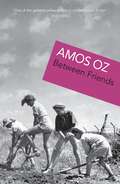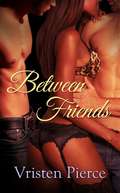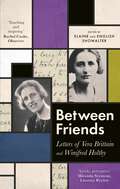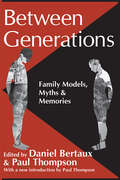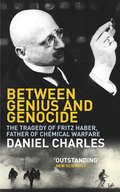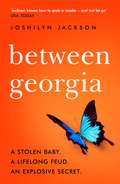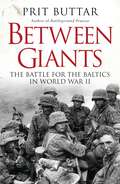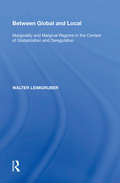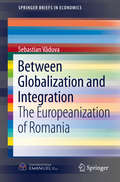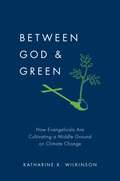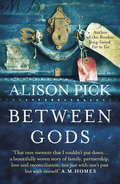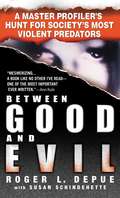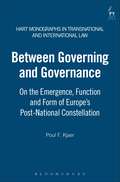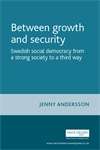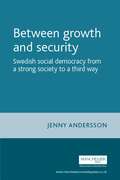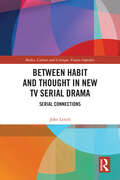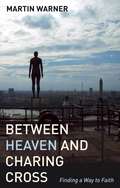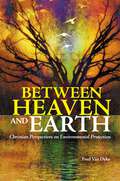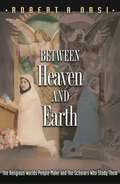- Table View
- List View
Between Friends: The Correspondence Of Hannah Arendt And Mary Mccarthy, 1949-1975
by Amos Oz‘On the kibbutz it’s hard to know. We’re all supposed to be friends but very few really are’Ariella, unhappy in love, confides in the woman whose husband she stole.Nahum, a devoted father, can’t find the words to challenge his daughter’s promiscuous lover.The old idealists deplore the apathy of the young, while the young are so used to kibbutz life that they can’t work out if they’re impassioned or indifferent. And amid this group of people unwilling and unable to say what they mean, Martin attempts to teach Esperanto.
Between Friends (Friends with Benefits #1)
by Vristen PierceREADY FOR TROUBLE Stacy Washington needs a change. After being unceremoniously dumped by her long-time boyfriend, she's on her way to one of the hottest clubs in town-and ready to shed her good-girl persona. Good-bye, inhibitions; hello, sexy bartender . . . Behind the counter, Evan is a sight to behold: dark, good looks, and a killer smile. But before Stacy has a chance to get to know him better, an equally sexy prospect comes her way, and this one is ready to play. Blond, tattooed Justin is not shy about telling Stacy exactly what he wants. Justin and Evan are best friends, but that doesn't stop them from letting Stacy know they'd like to see where the night can take them-all of them. This could be a tricky situation-or the most exhilarating experience of Stacy's life . . . Between Friends is a 21,000 word erotica novella.
Between Friends: Letters of Vera Brittain and Winifred Holtby
by Elaine Showalter English ShowalterThese fascinating letters between Vera Brittain and Winifred Holtby tell the story of an extraordinary friendship. A literary relationship that began when the women met at Somerville College, Oxford, in 1919, it lasted until Winifred's early death at the age of thirty-seven. The letters, written from 1920 to 1935, kept them 'continuously together', and show us the life of two pioneers who wished to make their mark as writers and campaigners. Each encouraged and advised the other. However, there were periods when they were literary rivals. Winifred landed a book deal first; Vera produced an international bestseller with Testament of Youth; and the letters show them negotiating envy and self-doubt. It was at times an uneven relationship: Vera, more than four years older, was married and had two children during this period, while Winifred, a single woman with an adventurous spirit, travelled and made a wide range of friends. As the heroine of her novel South Riding says, 'I was born to be a spinster and by God, I'm going to spin!' Vera decisively influenced Winifred's passion for feminism and peace; 'You made me,' Winifred told her. In turn, Winifred, who took care of Vera's children and placated her husband, gave Vera crucial intellectual and emotional support, fiercely believing in her literary gifts. A portrait of the inter-war years and a dramatic, touching and ultimately tragic story, the letters have the hallmarks of honest female friendship: not without friction and with its own delicate co-dependency, but life-changing for them both.
Between Generations: Family Models, Myths and Memories (International Yearbook Of Oral History And Life Stories Ser.)
by Daniel Bertaux & Paul ThompsonBetween Generations concerns powerful memories that continue to shape the present, but in this case in almost all families throughout the world. What is it that parents pass down to their children? How can we understand the mixture of conscious and unconscious models, myths, and material inheritance that are intertwined in both family and individual life stories? These questions turn out to be unexpectedly complicated, and answering them has suggested how a life-story approach can provide a new key to research on the dynamics of the family and on social change. Because culture is the essence of what makes individual humans into a group, the core of human social identity, its continuity is vital. Cultures are always changing, but the stability of languages, religions, and cultural habits can be astonishing. In contrast to the claims of culture to represent tradition over centuries, stands the sheer brevity of individual human life. Hence, the universal necessity for transmission between generations exists. This edition in the Memory and Narrative series, brings together, contributions from the Americas and Asia as well as from Western and Eastern Europe. They combine the techniques of life story research with the insights of family therapy. Interdisciplinary and intellectually stimulating, the volume will appeal to students in many areas, including history, sociology, literature, psychology, and anthropology.
Between Generations: Family Models, Myths and Memories
by Paul Thompson Daniel BertauxBetween Generations concerns powerful memories that continue to shape the present, but in this case in almost all families throughout the world. What is it that parents pass down to their children? How can we understand the mixture of conscious and unconscious models, myths, and material inheritance that are intertwined in both family and individual life stories? These questions turn out to be unexpectedly complicated, and answering them has suggested how a life-story approach can provide a new key to research on the dynamics of the family and on social change. Because culture is the essence of what makes individual humans into a group, the core of human social identity, its continuity is vital. Cultures are always changing, but the stability of languages, religions, and cultural habits can be astonishing. In contrast to the claims of culture to represent tradition over centuries, stands the sheer brevity of individual human life. Hence, the universal necessity for transmission between generations exists. This edition in the Memory and Narrative series, brings together, contributions from the Americas and Asia as well as from Western and Eastern Europe. They combine the techniques of life story research with the insights of family therapy. Interdisciplinary and intellectually stimulating, the volume will appeal to students in many areas, including history, sociology, literature, psychology, and anthropology.
Between Genius And Genocide: The Tragedy of Fritz Haber, Father of Chemical Warfare
by Daniel CharlesIn January 1934, as Hitler's shadow began to fall across Europe, a short, bald man carrying a German passport arrived at the Hotel Euler in Basle. He seemed haunted and restless, as though he urgently needed to be elsewhere. Fritz Haber, Nobel laureate in chemistry, confidante of Albert Einstein and German war hero, had arrived in Basle a broken man and, three days later, he died leaving an uncertain legacy. For some, the great German chemist was a benefactor of humanity, winner of a Nobel prize for inventing a way to nourish farmers' fields with nitrogen captured from the air. For others, he was a war criminal who personally supervised the unleashing of chlorine clouds against British, French and Canadian troops in World War I. Tragedy marked his life. A week after the first gas attack in 1915, Haber's wife took his pistol and shot herself. And in 1933, when Hitler came to power, 'the Jew Haber' was among the first scientists driven out of Germany. Within a year, Haber was dead - denied honour both in his homeland and abroad. No life reveals the moral paradox of science - its capacity to create and destroy - more clearly than Fritz Haber's. Between Genius and Genocide is a story filled with ambition, patriotism, hubris and tragedy, set amidst huge technological advances, arms races, mounting imperialism and war.
Between, Georgia: A stolen baby. A lifelong feud. An explosive secret.
by Joshilyn Jackson'Jackson knows how to grab a reader - and not let go' USA TodayA stolen baby. A lifelong feud. An explosive secret. Nonny Frett understands the meanings of 'rock' and 'hard place'. She's got two men: her husband easing out the back door and her best friend laying siege to her heart in her front yard. She has a job that holds her in the city, yet she's addicted to a little girl stuck deep in the country. And she has two families: the Fretts, who stole her and raised her right, and the Crabtrees, who lost her and can't forget they've been done wrong.Now a random act of violence is about to set the torch to a thirty-year-old stash of highly flammable secrets. This might be just what the town needs - if only Nonny wasn't sitting in the middle of it . . .Praise for BETWEEN, GEORGIA:'A delight from start to finish' - Publishers Weekly'A climactic ending with perfect resolution . . . even the most cynical reader will surely smile as the back cover closes' - Booklist'Evocative and lovingly crafted' - Kirkus'An exemplary novel' - Bookpage
Between Giants: The Battle for the Baltics in World War II (General Military Ser.)
by Prit ButtarDuring World War II, Latvia, Lithuania and Estonia found themselves trapped between the giants of the Soviet Union and Nazi Germany. Over the course of the war these states were repeatedly occupied by different forces, and local government organizations and individuals were forced to choose between supporting the occupying forces or forming partisan units to resist their occupation. Devastated during the German invasion, these states then became the site of some of the most vicious fighting during the Soviet counter-attack and push towards Berlin. Many would be caught up in the bitter fighting in the region and, in particular, in the huge battles for the Courland Bridgehead during Operation Bagration, when hundreds of thousands of soldiers would fight and die in the last year of the war. By the end of the war, death and deportation had cost the Baltic States over 20 per cent of their total population and Soviet occupation was to see the iron curtain descend on the region for four decades. Using numerous first-hand accounts and detailed archival research, Prit Buttar weaves a magisterial account of the bitter fighting on the Eastern Front and the three small states whose fates were determined by the fortunes and misfortunes of war.
Between Giants: The Battle for the Baltics in World War II
by Prit ButtarDuring World War II, Latvia, Lithuania and Estonia found themselves trapped between the giants of the Soviet Union and Nazi Germany. Over the course of the war these states were repeatedly occupied by different forces, and local government organizations and individuals were forced to choose between supporting the occupying forces or forming partisan units to resist their occupation. Devastated during the German invasion, these states then became the site of some of the most vicious fighting during the Soviet counter-attack and push towards Berlin. Many would be caught up in the bitter fighting in the region and, in particular, in the huge battles for the Courland Bridgehead during Operation Bagration, when hundreds of thousands of soldiers would fight and die in the last year of the war. By the end of the war, death and deportation had cost the Baltic States over 20 per cent of their total population and Soviet occupation was to see the iron curtain descend on the region for four decades. Using numerous first-hand accounts and detailed archival research, Prit Buttar weaves a magisterial account of the bitter fighting on the Eastern Front and the three small states whose fates were determined by the fortunes and misfortunes of war.
Between Global and Local: Marginality and Marginal Regions in the Context of Globalization and Deregulation
by Walter LeimgruberThe definitions for 'marginality' and 'marginal regions' are vague and differ between academic disciplines. Marginal regions could however be characterized as regions lying off mainstream processes (in a sort of vacuum) both in society and economy, but also in relation to the natural environment and geographical remoteness. Illustrated by a wide range of international case studies, this book provides a complete overview of current research into marginality and examines a wide range of possible development options which could offer hope to marginal regions. It explores the background to various kinds of marginality, describes various types of marginal regions and discusses possible solutions for political, economic and socio-cultural actors to fight the ongoing processes of marginalization. Marginality and marginal regions are looked at from a wide perspective and are seen as being in part the outcome of globalization and deregulation. The book not only discusses practical policy options, but also considers marginality in its relation to ethics and spirituality.
Between Global and Local: Marginality and Marginal Regions in the Context of Globalization and Deregulation
by Walter LeimgruberThe definitions for 'marginality' and 'marginal regions' are vague and differ between academic disciplines. Marginal regions could however be characterized as regions lying off mainstream processes (in a sort of vacuum) both in society and economy, but also in relation to the natural environment and geographical remoteness. Illustrated by a wide range of international case studies, this book provides a complete overview of current research into marginality and examines a wide range of possible development options which could offer hope to marginal regions. It explores the background to various kinds of marginality, describes various types of marginal regions and discusses possible solutions for political, economic and socio-cultural actors to fight the ongoing processes of marginalization. Marginality and marginal regions are looked at from a wide perspective and are seen as being in part the outcome of globalization and deregulation. The book not only discusses practical policy options, but also considers marginality in its relation to ethics and spirituality.
Between Globalization and Integration: The Europeanization of Romania (SpringerBriefs in Economics)
by Sebastian VaduvaThis volume focuses on the integration and globalization of Romania, a prominent emerging market in South-Eastern Europe and one of the major players in the securitization of the Black Sea and the Eastern European border, as both a part of NATO since 2004 and a fully integrated EU Member State since 2007. It will examine the challenges the country has faced in its progression from totalitarianism to democracy through several waves of reform intended to update and streamline its political and economic processes for success in the free-market capitalist arena. Having learned the hard way about some of the key aspects of public administration, Romania has learned a place for itself among the diverse global players of Europe and beyond. The first section reviews current perspectives on globalization and its impact in the late 20th century. It has “flattened” the Earth, generating better communication and exchanges than ever before, but also gathering a fair amount of criticisms from commentators seeing it as little else than neo-colonialism. Cooperative-administrative strategies are being suggested instead, in order for new public administration patterns to smoothly run in coordination with the globalized world. In the second section, the European Union is described as a complex multi-level socio-political entity, itself historically in turmoil over its own style of rule – e.g. hierarchy vs. coordination, integration vs. centralization, etc. – or even its own existence, as the European dream seemed to be losing steam with the general population of Europe several times in the previous century. Powers and responsibilities of the European institutions and agencies are also discussed. Thirdly, the recent history of Romania is approached from the Europeanization context, starting from its post-1989 days of confusion and of attempting to jumpstart democracy. Eventually, it has to undergo a series of reforms and internalize some principles fundamental to the EU in order for the much-awaited accession to occur and its multiple effects to start taking place. A country with a rich cultural heritage and straddling multiple socio-political axes, Romania has plenty more to offer in the new geostrategic, security and development contexts of the 21st-century Europe. As such, this volume provides inspiration for further research and practical application opportunities on topics of local, European and global significance.
Between God & Green: How Evangelicals Are Cultivating a Middle Ground on Climate Change
by Katharine K. WilkinsonDespite three decades of scientists' warnings and environmentalists' best efforts, the political will and public engagement necessary to fuel robust action on global climate change remain in short supply. Katharine K. Wilkinson shows that, contrary to popular expectations, faith-based efforts are emerging and strengthening to address this problem. In the US, perhaps none is more significant than evangelical climate care. Drawing on extensive focus group and textual research and interviews, Between God & Green explores the phenomenon of climate care, from its historical roots and theological grounding to its visionary leaders and advocacy initiatives. Wilkinson examines the movement's reception within the broader evangelical community, from pew to pulpit. She shows that by engaging with climate change as a matter of private faith and public life, leaders of the movement challenge traditional boundaries of the evangelical agenda, partisan politics, and established alliances and hostilities. These leaders view sea-level rise as a moral calamity, lobby for legislation written on both sides of the aisle, and partner with atheist scientists. Wilkinson reveals how evangelical environmentalists are reshaping not only the landscape of American climate action, but the contours of their own religious community. Though the movement faces complex challenges, climate care leaders continue to leverage evangelicalism's size, dominance, cultural position, ethical resources, and mechanisms of communication to further their cause to bridge God and green.
Between God & Green: How Evangelicals Are Cultivating a Middle Ground on Climate Change
by Katharine K. WilkinsonDespite three decades of scientists' warnings and environmentalists' best efforts, the political will and public engagement necessary to fuel robust action on global climate change remain in short supply. Katharine K. Wilkinson shows that, contrary to popular expectations, faith-based efforts are emerging and strengthening to address this problem. In the US, perhaps none is more significant than evangelical climate care. Drawing on extensive focus group and textual research and interviews, Between God & Green explores the phenomenon of climate care, from its historical roots and theological grounding to its visionary leaders and advocacy initiatives. Wilkinson examines the movement's reception within the broader evangelical community, from pew to pulpit. She shows that by engaging with climate change as a matter of private faith and public life, leaders of the movement challenge traditional boundaries of the evangelical agenda, partisan politics, and established alliances and hostilities. These leaders view sea-level rise as a moral calamity, lobby for legislation written on both sides of the aisle, and partner with atheist scientists. Wilkinson reveals how evangelical environmentalists are reshaping not only the landscape of American climate action, but the contours of their own religious community. Though the movement faces complex challenges, climate care leaders continue to leverage evangelicalism's size, dominance, cultural position, ethical resources, and mechanisms of communication to further their cause to bridge God and green.
Between Gods: A Memoir
by Alison PickFrom Alison Pick, the Man-Booker longlisted author of FAR TO GO, comes an unforgettable memoir about family secrets, depression, and the author's journey to reconnect with her Jewish identity.Shortlisted for the Jewish Quarterly Wingate Prize 2016Alison Pick was born in the 1970s and raised in a loving, supportive family, but as a teenager she made a discovery that changed her understanding of who she was for ever. She learned that her Pick grandparents, who had escaped from Czechoslovakia during WWII, were Jewish, and that most of this side of the family had died in concentration camps. At this stage she realised that her own father had kept this a secret from Alison and her sister. Engaged to be married to her longterm boyfriend but in the grip of a crippling depression, Alison began to uncover her Jewish heritage, a quest which challenged all her assumptions about her faith, her future, and what it meant to raise a family. An unusual and gripping story, told with all the nuance and drama of a novel, this is a memoir illuminated with heartbreaking insight into the very real lives of the dead, and hard-won hope for all those who carry on after.
Between Good and Evil: A Master Profiler's Hunt for Society's Most Violent Predators
by Roger L. Depue Susan SchindehetteHe was a pioneer in modern law enforcement, a trailblazing leader in the hunt for serial killers. But after decades of staring deep into the darkness, he entered a seminary to search for the good... BETWEEN GOOD AND EVIL No one gets closer to evil than a criminal profiler, trained to penetrate the hearts and minds of society's most vicious psychopaths. And no one is a more towering figure in the world of criminal profilers than Roger L. Depue. Chief of the FBI Behavioral Science Unit at a time when its innovative work first came to prominence, he headed a renowned team of mind hunters that included John Douglas, Robert Ressler, and Roy Hazelwood. In a subbasement sixty feet under the Academy gun vault in Quantico, he broke new ground with analytical techniques and training programs that are still used today. After retiring from the FBI, he founded an elite forensics group that consulted on high-profile cases, including the Martha Moxley and JonBenet Ramsey murders, and the Columbine school shootings. But coming face-to-face with the darkest deeds human beings are capable of took a horrific toll. After suffering a devastating personal loss, Depue, on the brink of despair, walked away from the outside world and joined a seminary. For three years this was his safe haven, a place where he exorcised personal demons and found a refuge from terrifying memories of real-life monsters. And it was there, while counseling maximum security inmates, that he rediscovered the capacity for goodness in people, and made the decision to return to the world to resume his work. Here is Depue's extraordinary personal account, from growing up as a police officer's son to tracking down some of today's most brutal murderers. With its harrowing descriptions of human depravity and passionate call to fight against evil, BETWEEN GOOD AND EVIL is both a riveting dispatch from the front lines of a war against human predators...and the powerful story of one man's journey between darkness and redemption.
Between Governing and Governance: On the Emergence, Function and Form of Europe's Post-National Constellation (Hart Monographs in Transnational and International Law)
by Poul F KjaerThis book explains the emergence and functioning of three forms of governance structures within the context of the European integration and constitutionalisation process: comitology, (regulatory) agencies and the Open Method of Co-ordination. The point of departure is the insight that the intergovernmental/supranational distinction, which most theories of European integration and constitutionalisation rely on, has lost its strength. A new paradigm of EU research is therefore needed.Against this background it is suggested that the distinction between governing and governance provides a more appropriate basis for analysing the phenomenon of integration and constitutionalisation in Europe. The distinction between governing and governance allows for an understanding of the EU as a hybrid consisting of a governing dimension, characterised by legal and organisational hierarchy, and a governance dimension which operates within a network form characterised by legal and organisational heterarchy. The function of governance structures is to ensure the embeddedness of the governing dimension in the wider society. Instead of representing contradictory developments, the two dimensions are therefore mutually constitutive in the sense that more governing implies more governance and vice versa. These theoretical insights are illustrated through two detailed case studies which respectively reconstruct the operational mode of the Open Method of Coordination within EU Research & Development Policy and the regulatory system for the EU chemicals market (REACH).The book is inter-disciplinary in nature and incorporates insights from law, political science and sociology.
Between growth and security: Swedish social democracy from a strong society to a third way (PDF) (Critical Labour Movement Studies)
by Jenny AnderssonThe notion of social policy as a productive investment and a prerequisite for economic growth became a core feature in the ideology of Swedish social democracy, and a central component of the universalism of the Swedish welfare state. However as the Swedish Social Democratic Party (SAP) embarked on its Third Way in 1981, this outlook on social policy as a productive investment was replaced by the identification of social policy as a cost and a burden for growth. This book discusses the components of this ideological turnaround from Swedish social democracy’s post-war notion of a strong society, to its notion of a Third Way in the early 1980s. It is a novel and innovative contribution to the history of Swedish social democracy and recent developments in the Swedish welfare state, and it also sheds light on contemporary social policy debates. It will appeal to a wide readership from students of contemporary history and politics to policy makers and specialists.
Between growth and security: Swedish social democracy from a strong society to a third way (Critical Labour Movement Studies)
by Jenny AnderssonThe notion of social policy as a productive investment and a prerequisite for economic growth became a core feature in the ideology of Swedish social democracy, and a central component of the universalism of the Swedish welfare state. However as the Swedish Social Democratic Party (SAP) embarked on its Third Way in 1981, this outlook on social policy as a productive investment was replaced by the identification of social policy as a cost and a burden for growth. This book discusses the components of this ideological turnaround from Swedish social democracy’s post-war notion of a strong society, to its notion of a Third Way in the early 1980s. It is a novel and innovative contribution to the history of Swedish social democracy and recent developments in the Swedish welfare state, and it also sheds light on contemporary social policy debates. It will appeal to a wide readership from students of contemporary history and politics to policy makers and specialists.
Between Habit and Thought in New TV Serial Drama: Serial Connections (Media, Culture and Critique: Future Imperfect)
by John LynchBetween Habit and Thought in New TV Serial Drama: Serial Connections is a consideration of some of the key examples of serial television drama available via transnational streaming platforms in recent times. Through the individual works examined, the book exemplifies the ways in which aesthetics, technology, and capitalism weave a complex social fabric around the production of the respective television series, thus presenting this type of serial drama as a finely engineered cultural production. Taking Bernard Stiegler’s notion of an "image warfare" as its starting point, the author critically investigates the strategies deployed by the shows’ producers to navigate this dynamic, shaped by the "new spirit of capitalism". With creativity intrinsic to the process, on the one hand, and a highly efficient drive for capturing and fixing attention driven by algorithm and economic logic, on the other, the author maps the processes at work in the production of high-value serial drama and considers how, despite this tension, they manage to present meaningful insights into the experience of being in this world: A world shaped by trauma, a desire for justice, and a search for systems of belief that can offer a way through the vicissitudes of contemporary life. Framed by a detailed analysis of the multiple processes that shape these works is a sustained analysis of the serials Mr Robot, Billions, The Leftovers, Rectify, and Westworld, and the dynamics of despair and hope that ripple through them. As such, it will appeal to readers of film and television studies, cultural theory, and those interested in furthering a critical aesthetics for our time.
Between Habit and Thought in New TV Serial Drama: Serial Connections (Media, Culture and Critique: Future Imperfect)
by John LynchBetween Habit and Thought in New TV Serial Drama: Serial Connections is a consideration of some of the key examples of serial television drama available via transnational streaming platforms in recent times. Through the individual works examined, the book exemplifies the ways in which aesthetics, technology, and capitalism weave a complex social fabric around the production of the respective television series, thus presenting this type of serial drama as a finely engineered cultural production. Taking Bernard Stiegler’s notion of an "image warfare" as its starting point, the author critically investigates the strategies deployed by the shows’ producers to navigate this dynamic, shaped by the "new spirit of capitalism". With creativity intrinsic to the process, on the one hand, and a highly efficient drive for capturing and fixing attention driven by algorithm and economic logic, on the other, the author maps the processes at work in the production of high-value serial drama and considers how, despite this tension, they manage to present meaningful insights into the experience of being in this world: A world shaped by trauma, a desire for justice, and a search for systems of belief that can offer a way through the vicissitudes of contemporary life. Framed by a detailed analysis of the multiple processes that shape these works is a sustained analysis of the serials Mr Robot, Billions, The Leftovers, Rectify, and Westworld, and the dynamics of despair and hope that ripple through them. As such, it will appeal to readers of film and television studies, cultural theory, and those interested in furthering a critical aesthetics for our time.
Between Heaven and Charing Cross
by Martin WarnerIn What's Going on Inside, Martin Warner sets out to give an intellectual and spiritual account of the adventure of faith. With originality and courage, Warner has based this book on the vesting prayers used by the celebrant at the Eucharist. However, a scriptural metaphor best describes the book's contents. In Genesis, God promises to make Abraham's descendants as many as the stars in the night sky; this book recovers a vision of the stars for understanding the inheritance of that promise today. What goes on in our minds when we begin to think about prayer, worship and God? How do we identify what we mean by spirit? Warner explores the theme of what is shared and what is eternal and looks at the implications of the binding by God of God himself to humanity. Finally, friendship with God is seen as a foundation for understanding human dignity. In all this, the universal aspect of vesting prayers is applied - for we are all clothed in ressurrection bodies.
Between Heaven and Earth: Christian Perspectives on Environmental Protection
by Fred Van DykeThe first comprehensive survey of Christian environmental ethics and activism offers a Christian understanding of environmental conservation, protection, and stewardship that speaks directly to ongoing environmental issues.There are many books on Christian environmental ethics, but none provides a clear and thorough analysis of the history of the church's understanding of and practices toward the care of creation. In addition to filling this important void, Between Heaven and Earth: Christian Perspectives on Environmental Protection is also unique in at least two ways. First, it frames Christian responses to ethical questions as they are understood by modern conservation ethicists. Second, it addresses issues of conservation management and policy as they really exist.This captivating volume begins by framing the complex interaction between ethics, environment, and faith and the relation of that interaction to questions of environmental ethics. Subsequent chapters illuminate a biblical understanding of the human relationship to nature and the church's teachings and practices regarding that relationship, illustrated through the lives of scholars and saints. The book concludes with an examination of the ways in which Christian practice and teaching can shape environmental policy today and the ways in which partnerships can be built between the church and the environmental community.
Between Heaven and Earth: The Religious Worlds People Make and the Scholars Who Study Them
by Robert A. OrsiBetween Heaven and Earth explores the relationships men, women, and children have formed with the Virgin Mary and the saints in twentieth-century American Catholic history, and reflects, more broadly, on how people live in the company of sacred figures and how these relationships shape the ties between people on earth. In this boldly argued and beautifully written book, Robert Orsi also considers how scholars of religion occupy the ground in between belief and analysis, faith and scholarship. Orsi infuses his analysis with an autobiographical voice steeped in his own Italian-American Catholic background--from the devotion of his uncle Sal, who had cerebral palsy, to a "crippled saint," Margaret of Castello; to the bond of his Tuscan grandmother with Saint Gemma Galgani. Religion exists not as a medium of making meanings, Orsi maintains, but as a network of relationships between heaven and earth involving people of all ages as well as the many sacred figures they hold dear. Orsi argues that modern academic theorizing about religion has long sanctioned dubious distinctions between "good" or "real" religious expression on the one hand and "bad" or "bogus" religion on the other, which marginalize these everyday relationships with sacred figures. This book is a brilliant critical inquiry into the lives that people make, for better or worse, between heaven and earth, and into the ways scholars of religion could better study of these worlds.
Between Heaven and Earth: The Religious Worlds People Make and the Scholars Who Study Them (PDF)
by Robert A. OrsiBetween Heaven and Earth explores the relationships men, women, and children have formed with the Virgin Mary and the saints in twentieth-century American Catholic history, and reflects, more broadly, on how people live in the company of sacred figures and how these relationships shape the ties between people on earth. In this boldly argued and beautifully written book, Robert Orsi also considers how scholars of religion occupy the ground in between belief and analysis, faith and scholarship. Orsi infuses his analysis with an autobiographical voice steeped in his own Italian-American Catholic background--from the devotion of his uncle Sal, who had cerebral palsy, to a "crippled saint," Margaret of Castello; to the bond of his Tuscan grandmother with Saint Gemma Galgani. Religion exists not as a medium of making meanings, Orsi maintains, but as a network of relationships between heaven and earth involving people of all ages as well as the many sacred figures they hold dear. Orsi argues that modern academic theorizing about religion has long sanctioned dubious distinctions between "good" or "real" religious expression on the one hand and "bad" or "bogus" religion on the other, which marginalize these everyday relationships with sacred figures. This book is a brilliant critical inquiry into the lives that people make, for better or worse, between heaven and earth, and into the ways scholars of religion could better study of these worlds.
